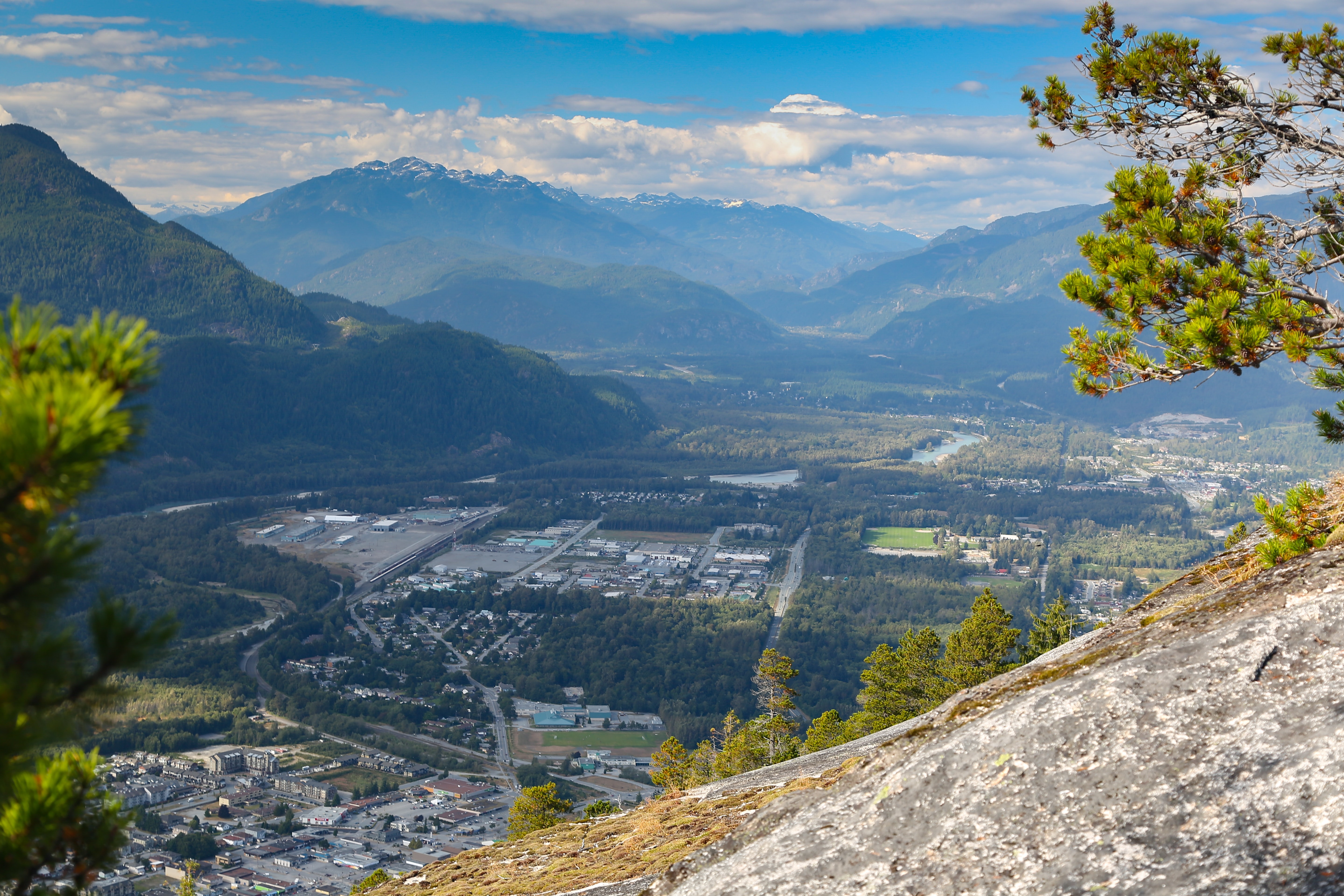History of Squamish
The first people to live in the Howe Sound arrived in search of food and shelter about 5,000 years ago. Over time, their population grew in number and they began to build permanent settlements. Their society was dependent on salmon, cedar, shellfish, oolichans, and their own resourcefulness. The first Europeans arrived during the first half of the nineteenth century and developed a relationship based upon trade with the First Nations inhabitants of the area. The relative equilibrium between the two groups was crushed by the Cariboo Gold Rush of 1858. Almost overnight, the area was overrun by tens of thousands of fortune seekers. The Howe Sound would never be the same, as the new immigrants began to seek possession of the land for themselves for timber extraction, mining, and agriculture.
The first recorded settler in the Squamish Valley dates back to 1874 and by 1892 about 35 families lived in what is now Brackendale. Other inhabitants of the valley included Chinese labourers and a small community of Sikhs. Waterfront saw and pulp mills, mines, and farms began to dot the landscape. Farming was the main economic foundation for the European settlers and agriculture became more diverse and prosperous.
In June 1914, construction began on The Pacific Great Eastern Railway. By fall of the same year, the railway connected Squamish and Pemberton, changing the culture of the Squamish Valley forever. Although people could use the southern ferry corridor to travel from Vancouver to Squamish, it was not until 1956 that the communities would be connected by rail and another two years before they were connected by road.
By the late 1940s, the forestry industry had taken hold in Squamish. Although the two communities of Brakendale and the Howe Sound had been connected by a road since 1892, it was not until 1948 that Downtown Squamish was incorporated as a Village. Nevertheless, the Valley as a whole remained divided into a collection of separate communities with no common government. On November 21, 1964, 78 per cent of the 3,000 Squamish Valley residents voted in favour of incorporation as a municipality.
As Squamish enjoyed decades of isolation from the rest of British Columbia, few people came up the Howe Sound for any reason other than settling and earning a living. The exceptions were the climbers of the British Columbia Mountaineering Club, with their eyes on the high, unclimbed peaks surrounding the Squamish Valley. It was over 100 years ago that the first attempts were made to conquer the peak of Mount Garibaldi. Since these early days, the spirit of climbing and outdoor adventure has been a mainstay of the Squamish community.
From the 1970s until only recently, Squamish was known as that town with the funny sounding name at the halfway mark between the heart of downtown metropolitan Vancouver and Whistler’s award-winning ski slopes. But today, Squamish is widely regarded as the Recreation Capital of Canada, and has quickly evolved into a successful tourist destination in its own right, drawing thousands of visitors to discover its action-packed outdoor adventures every year.

